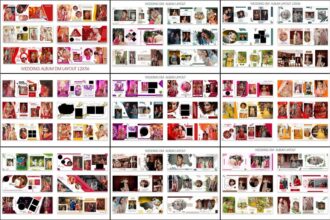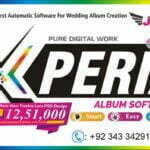You must consider various factors while working on graphic design tasks. While incorporating images and their modifications to fit the overall theme of the design is essential, you can’t overlook the importance of text. It can be a make-or-break factor in a design. Hence, you must pay attention to the appearance of text in your design.
“Typography” refers to arranging text so that the words or writing included in a design appears readable, legible, and appealing to everyone who views it. Typography is a cornerstone of your graphic design, and it completes the core theme, communicates emotions, and plays a key part in establishing the brand identity.
Do you find this topic interesting? If so, this article serves as a goldmine for you by exploring the basics of typography, elaborating on various font types, and differentiating between fonts and typefaces. It also outlines multiple usage tips and helps you understand how custom fonts can be valuable. Read on to learn more.
The Essentials of Typography in Graphic Design
Some people think that typography is nothing but a selection of cool fonts. However, it is a false approach. Typography in graphic design is much more than that. Thoughtfully chosen and used typography can help you blend balance, style, and creativity into your design. It guides the audience’s perception of the content featured in your design and their interaction with it. Simply put, typography is crucial in enhancing any graphic design’s readability and visual appeal.
Some key aspects of typography that should be considered while working on graphic design are listed below:
- Fonts ensure a resonating appearance of text with the design aesthetics and improve the design’s visual appeal.
- Hierarchy helps designers visually guide the attention of viewers to key information.
- Spacing ensures design organization with proper kerning, leading, and tracking. If done correctly, the alignment of text enhances the readability and aesthetic balance.
- Contrast ensures visual hierarchy by differentiating text size, weight, and color.
Rules for Using Various Fonts
The term “Font” refers to the design of the text that is responsible for bringing character and tone to the message you want to communicate through the design. Most people often confuse typefaces and fonts. However, both these terms have different meanings. A family of fonts with a standard design is called a typeface. Conversely, a particular style or weight within a font family is termed a font. For instance, Aerial Light and Aerial Bold are two different fonts from a single family.
Fonts come in various types, each of which serves a unique purpose. You must consider a few rules for using different font types in a graphic design. Doing so helps you achieve the right objective through a particular design, shape your audience’s perception, and convey your message effectively. Here is a detailed explanation of several font types, their unique purposes, and ideal ways to use them to help you choose the right style.
Serif
This type of font is identified by the small strokes or serifs at the ends of characters. It is generally used for body text in formal documents, books, and designs for brands that emphasize traditional appearance. This type of font can be used in graphic design to ensure a classic and elegant look.
Sans-Serif
Fonts with no strokes or serifs at the end of characters are categorized into the sans-serif type. Such fonts are perfect for designs that require sleek and modern-looking text to ensure a minimalistic and contemporary appearance. Tech brands often use these fonts to craft designs for their visual marketing campaigns. Additionally, they find their frequent use in digital contexts, especially websites, document headlines, and signage.
Script
Fonts used to replicate handwriting or calligraphy are categorized into the script type. Such fonts are often used for decorative purposes in graphic design. Their incorporation complements a decorative theme and adds a personal, elegant, or artistic touch. High-end Brands often use these fonts to emphasize luxury, unparalleled quality, uniqueness, rich heritage, and exclusivity. You may also witness the use of these fonts in designs crafted for wedding invitations.
Monospace
Monospace fonts are easily identifiable because of the distinct characteristic of this type, which is the same amount of horizontal space taken by each character, like the text generated by a typewriter. While monospace fonts are commonly used for coding, they are significant in graphic designs that evoke a retro or technical style. These fonts are widely used for tech branding purposes. They are also used in coding interfaces.
Display
This font type offers a unique visual appeal because of its bold and attention-grabbing characters. The ability of these fonts to draw attention makes them perfect for headlines and visual emphasis. However, you won’t see them getting used for large blocks of text. Such fonts are primarily used in posters, advertisements, and branding designs.
Custom
As the name suggests, custom fonts don’t belong to a particular genre. Such fonts are not already a part of any predefined type, including serif, sans-serif, monospace, display, or script styles. Instead, they are purposefully built to fulfill the needs of a particular brand, project, or design. These fonts are categorized into a specific category based on their appearance and design characteristics. Custom fonts stand out from the existing typefaces and fit the aesthetics of a particular design.

While generating a custom typeface from scratch is a laborious task that may take several days or weeks, a relatively easy way to do it is to use a reliable online free font generator. This tool will help you choose each font aspect, including size, weight, curves, and spacing, according to your needs without wasting too much time. Additionally, such a font maker offers plenty of existing templates to fit your needs, regardless of the project you are working on.
Final Thoughts
While many people associate typography with aesthetics in graphic design, it is much more than that. You can call it the art of effectively communicating your message and shaping the audience’s perception by choosing the right text style. You must grasp the fundamentals of typography and multiple types of fonts to ensure an impressive graphic design. This article helps you do that by discussing everything you should know about this valuable concept. Hopefully, you will find it helpful!
Note:
If you’re facing issues with downloading the file such as "it may take up to 24 hours to be able to view or download the file" So please ensure you are logged into your Google account before attempting to download. This usually resolves the issue and allows you to download the file without any waiting time.








